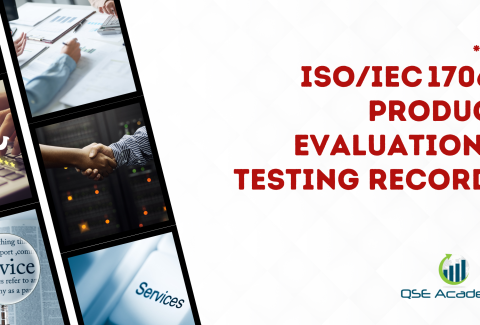ISO/IEC 17065 Mandatory Procedures List
Why Mandatory Procedures Matter in ISO/IEC 17065 Compliance
When you operate as a Certification Body, the strength of your system comes down to how well you define, control, and apply your procedures. Over the years working with CBs across different product categories—food, cosmetics, electrical, agriculture—I’ve seen the same pattern: organizations often know the requirements, but their procedures don’t reflect the structure, impartiality rules, or traceability expected by ISO/IEC 17065.
Accreditation bodies don’t just check your activities—they examine your procedures line by line. They expect clarity, consistency, and evidence that you follow defined controls. This guide breaks down the mandatory procedures every CB must document, implement, and maintain. Each one supports impartiality, transparency, consistency, and credibility across your certification system.
Impartiality Procedure (ISO/IEC 17065 Impartiality Requirements Explained)
Your impartiality procedure is the foundation of your certification system. It must document how you identify risks to impartiality, how you manage conflicts of interest, and how you protect decision independence.
A strong impartiality procedure includes:
- impartiality review structure
- risk-identification method
- mitigation controls
- independence checks
- committee oversight
- documented records
Pro Tip:
Document impartiality risks at the activity level: evaluation, sampling, testing, decision-making, subcontracting. This shows depth and awareness.
Common Mistake:
Treating impartiality as a one-time risk assessment. ISO/IEC 17065 requires continuous monitoring.
Real Example:
A CB received a major NC when evaluators who had commercial relationships with clients were not disclosed or monitored.
 Confidentiality Procedure (ISO/IEC 17065 Confidentiality Management Controls)
Confidentiality Procedure (ISO/IEC 17065 Confidentiality Management Controls)
Confidentiality isn’t optional. Your procedure must describe how you control access, protect sensitive information, and define conditions for legally required disclosures.
A complete confidentiality procedure includes:
- data access rules
- confidentiality agreements
- digital and physical security
- disclosure triggers
- breach-handling process
Pro Tip:
Map your information flow: source → storage → access → usage → archival → deletion. This helps identify weak points.
Common Mistake:
Relying only on NDAs. Auditors expect operational controls, not just signatures.
Real Example:
A CB was cited because internal staff could access client reports without authorization—an immediate confidentiality breach.
Competence Management Procedure (ISO/IEC 17065 Competence Requirements & Evaluations)
ISO/IEC 17065 requires you to define competence criteria for every role: evaluators, reviewers, decision-makers, inspectors, and technical experts. Your procedure must show how you qualify, monitor, and reassess personnel.
Your procedure should include:
- competence criteria per product category
- qualification methods
- training requirements
- performance monitoring
- reassessment intervals
- competence matrix
Pro Tip:
Link competence requirements directly to product risk levels. This prevents generic qualifications.
Common Mistake:
Using the same competence list for all product categories. Accreditation bodies will challenge this immediately.
Real Example:
A CB failed to justify competence for a reviewer assigned to highly technical electrical equipment — triggering a nonconformity.
Evaluation & Testing Procedure (ISO/IEC 17065 Product Evaluation Requirements)
Evaluation is the most evidence-heavy part of certification. Your procedure must define how you perform document review, sampling, testing, inspections, and technical assessments.
Your evaluation procedure should cover:
- evaluation sequence
- sampling criteria
- test method selection
- inspection requirements
- subcontractor controls
- evaluation records format
Pro Tip:
Create flowcharts to show the evaluation process from application → review → sampling → testing → reporting. Flowcharts prove control and consistency.
Common Mistake:
No clear link between evaluation activities and conformity criteria. This leads to inconsistent outcomes.
Real Example:
A CB faced a major NC because test methods used by subcontracted labs were not aligned with the scheme’s defined acceptance criteria.
Certification Decision Procedure (ISO/IEC 17065 Independent Decision Controls)
Decision-making must remain independent from evaluation activities. Your procedure must define how decisions are made, who has authority, and how impartiality is protected.
Your decision procedure should include:
- decision roles and responsibilities
- required evidence inputs
- decision criteria checklists
- independence rules
- condition-based decisions
- communication steps
Pro Tip:
Add a mandatory impartiality confirmation step before approval.
Common Mistake:
Allowing evaluators to influence or participate in decision-making. This is an immediate major NC under ISO/IEC 17065.
Real Example:
A CB had to restructure after auditors found that the same person evaluated and approved certain products.
Complaints & Appeals Procedure (ISO/IEC 17065 Complaint & Appeal Management Process)
Complaints and appeals must be handled impartially, transparently, and independently. Your procedure must define steps, timelines, communication pathways, and escalation levels.
A solid complaint & appeal procedure includes:
- intake channels
- verification process
- investigation method
- documentation requirements
- decision authority
- communication of outcomes
- record retention
Pro Tip:
Use a structured complaint log with timestamps and assigned responsibility. Auditors look for evidence of follow-up.
Common Mistake:
Failing to separate appeal decisions from original decision-makers.
Real Example:
A CB faced an NC because appeals were reviewed by the same individuals involved in the initial evaluation.
Certification Scheme Management Procedure (ISO/IEC 17065 Scheme Document & Review Requirements)
Your scheme management procedure defines how certification schemes are created, reviewed, updated, and approved. It ensures consistency across all certified products.
A complete scheme management procedure includes:
- scheme design rules
- review frequency
- update triggers
- approval authority
- regulatory/standard alignment
- documentation structure
Pro Tip:
Review schemes after regulatory changes. Accrediting bodies expect proactive updates.
Common Mistake:
Using outdated scheme documents that no longer reflect regulatory requirements.
Real Example:
A CB received an NC because its scheme referenced outdated labeling requirements no longer legally valid.
Conclusion — A Strong Procedure Framework Protects Your Certification Body
Mandatory procedures are not paperwork—they are the backbone of your entire certification program. Each one supports impartiality, consistency, traceability, and transparency. When procedures are well-structured and actively implemented, you reduce audit risk, strengthen decision quality, and enhance your organization’s credibility.
Having worked with many Certification Bodies through accreditation, I’ve seen how quickly weak procedures lead to findings. The solution is always the same: build clear procedures, maintain full control, and update them regularly.
If you want, I can now turn these into fully formatted templates you can plug directly into your documentation system.
Melissa Lavaro is a seasoned ISO consultant and an enthusiastic advocate for quality management standards. With a rich experience in conducting audits and providing consultancy services, Melissa specializes in helping organizations implement and adapt to ISO standards. Her passion for quality management is evident in her hands-on approach and deep understanding of the regulatory frameworks. Melissa’s expertise and energetic commitment make her a sought-after consultant, dedicated to elevating organizational compliance and performance through practical, insightful guidance.









